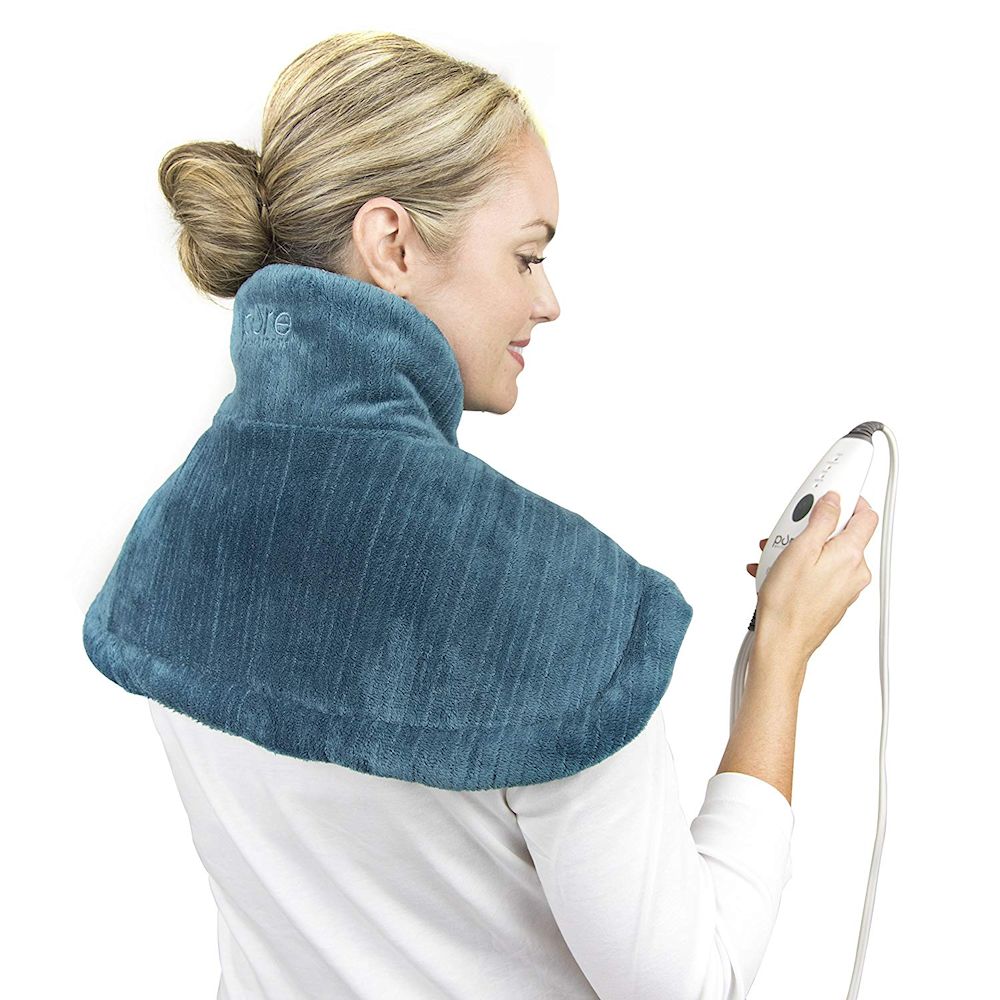Heat Therapy For Neck And Back Pain Benefits & Contra-Indications
From the time of the earliest bath houses, individuals have used heat therapy for neck and back pain. A warm fire, hot coals and warm compresses have come down through the history of mankind as useful healing methods.
 Heat produces a thermal effect and the part of the body treated increases in temperature locally, which further increases the effects of heating. The body responds to heat therapy by producing an analgesic and relaxing effect, there is a slight increase in local metabolism and sedation of sensory nerves. The rise in metabolism produces additional heating, which causes substances to be released to dilate blood vessels and increase blood flow. This is easily achieved with the many hot pack products that are available today.
Heat produces a thermal effect and the part of the body treated increases in temperature locally, which further increases the effects of heating. The body responds to heat therapy by producing an analgesic and relaxing effect, there is a slight increase in local metabolism and sedation of sensory nerves. The rise in metabolism produces additional heating, which causes substances to be released to dilate blood vessels and increase blood flow. This is easily achieved with the many hot pack products that are available today.
When neck heat therapy is applied for too long and with too much heat, swelling can occur, mimicking the reaction of the body to tissue tearing like a strain or sprain injury often seen with whiplash injuries, a twisted ankle or a pulled muscle in the back. Utilizing the appropriate amount of heat and time, the beneficial effects of heat therapy are achieved. These benefits include elimination of waste products and an increase in oxygen supply, nutrients as well as a more rapid response by cells which clean the area.
While applying heat therapy for neck and back pain and it is too short a period of time, it will have little or no effects. There is a tendency to over-utilize heat for injuries where pain and swelling are present. While it may feel good initially, applying heat to recent injuries where there is inflammation can result in aggravating the condition and prolonging healing by producing further swelling. When a condition or injury is acute, use ice or cold therapy until the inflammation/swelling subsides.
Local Effects Of Heat Therapy
Heat applied locally increases tissue metabolism, thus detoxifying the area; however, heat applied too long or too hot can have the reverse effect, decreasing metabolism with resulting congestion and swelling. The local effect of heating on the skin and underlying fatty tissue is to promote sweating, aiding in the removal of toxic wastes. If the heat is beyond tolerance, a burn may result. The nerve receptors of the skin respond by increasing tolerance, causing a release of chemicals which reduce pain.
This effect is not substantial and does not warrant heat therapy as a major source of pain control, however, relief is measurable and should be included as a adjunct to other forms of therapy. For example, heat application prior to traction can increase relaxation and suppleness of muscles, thus increasing the effectiveness of traction therapy to the neck and back.
Heat has a psychologically beneficial effect regarding relaxation. This is a double edged sword. Since heat feels good, an individual may feel that if 5 minutes of heat feels good, 30 minutes of heat should feel even better. However, heat is often overused and when applied to acute conditions where pain and swelling exists, while 5 minutes may feel good and will not do harm, excessive use of heat under these conditions produces more swelling and prolongs healing.
To avoid this, heat should not be applied an injury for 48 to 72 hours, perhaps longer if there is a chance of re-injury or recurring bleeding and swelling. When there is an injury, the body responds by producing an inflammatory reaction which blocks circulation. This allows cells which help clean the area to move rapidly to the affected part. After the first 48 to 72 hours, this process is usually complete and fresh blood needs to bathe the area to further enhance the healing process. Because the waste products of the initial healing stage are difficult to remove through constricted blood vessels, heat therapy is used to assist this process.
Depending on the extent of the injury and an individuals response, the goal is to manage excessive responses to the healing process. For those who do not like to use ice therapy after an injury due to sensitivity, light massage with a good topical creams or lotions towards the heart can be substituted and these are handy products to have around for quick application.
What Is The Right Temperature Using Heat Therapy For Neck And Back Pain?
Depending on tolerance, the temperature range should be between 100 and 115 degrees F. It should be noted that there are many variables with different types of heat application and temperatures within this range can cause damage if used for several hours. A basic rule would be 113 degrees F for 30 minutes when there is close contact of the heating agent to the skin.
General Benefits Of Heat Therapy For Neck And Back Pain
Local heat therapy relieves muscle spasm, increases blood and lymphatic flow, sedates nerves, enhances local nutrition, and detoxifies.
A 2018 study in Clinical Biomechanics showed that using a heat wrap for several hours a day provided additional benefits in strengthening in conjunction with a multi-modal treatment plan. This shows significant benefits for rehabilitation in chronic conditions.
General Contraindication For Heat Therapy
Over areas that have diminished sensation like recently formed scars or where topical ointments have been used that alter sensation, bleeding disorders, localized swelling, skin conditions such as sunburn or rashes, over metal – implants and jewelry or over a pregnant uterus.
If in doubt, always consult with your health care professional when using heat therapy for neck and back pain.


